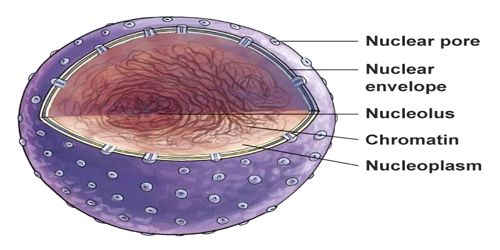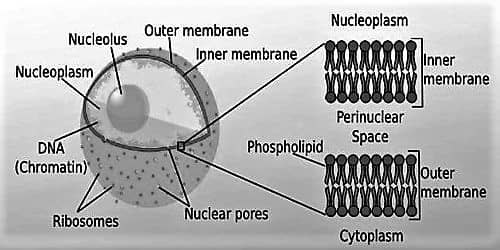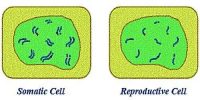Nucleoplasm: The nucleoplasm is a type of protoplasm that is made up mostly of water, a mixture of various molecules, and dissolved ions. It is a transparent and dense fluid bounded by a nuclear membrane. Nucleolus and chromosomes are present in it. It is important, because many substances, including enzymes and nucleotides, are dissolved in the nucleoplasm. Nucleoplasm is the protoplasm of the nucleus of a cell. It is the gelatinous essence within the nuclear envelope.
This substance is completely enclosed in the nuclear envelope, which also contains nucleotides and significant enzymes that facilitate replication. It is an extremely gelatinous, steamy liquid that supports the chromosomes and nucleoli. A soluble, fluid component of the nucleoplasm is called the nuclear hyaloplasm.

Function: The main function of the nucleoplasm is to serve as a suspension substance for the organelles inside the nucleus. It also helps maintain the shape and structure of the nucleus and plays an important role in the transportation of materials that are vital to cell metabolism and function. It holds chromosomes and performs various organic functions. It also supports the nucleus by helping to maintain its shape.
- The main function of the nucleoplasm is to serve as a deferment essence for the organelles within the nucleus. It helps cushion and thus shields the nucleolus and chromosomes while also helping preserve the common shape of the nucleus. It also helps sustain the form and formation of the nucleus and plays a significant role in the transportation of materials that are essential to cell metabolism and function.
- The nucleoplasm contains many enzymes which are essential for the synthesis of the DNA and RNA. The nucleus of most cells contains a substance that suspends structures inside the nuclear membrane. The nucleoplasm contains small lipid content. The nucleoplasm also contains numerous inorganic compounds such as phosphorus, potassium, sodium, calcium, and magnesium.
- The nucleoplasm performs definite functions such as sustaining the chromatin substance and nucleolus and providing inflexibility to the nucleus. It has a compound chemical composition, it is composed mostly of the nuclear proteins but it also contains other inorganic and organic substances such as nucleic acids, proteins, enzymes, and minerals. It is the site of synthesis of DNA, RNA, and ribosomal subunits.
- The nucleoplasm is a type of protoplasm that is made up mostly of water, a mixture of various molecules, and dissolved ions. It is composed of water, dissolved ions and a mixture of other molecules. It is a highly viscous liquid contained within the nucleus that surrounds the chromosomes and other subnuclear organelles. It is wholly enclosed within the nuclear membrane or nuclear envelope.













